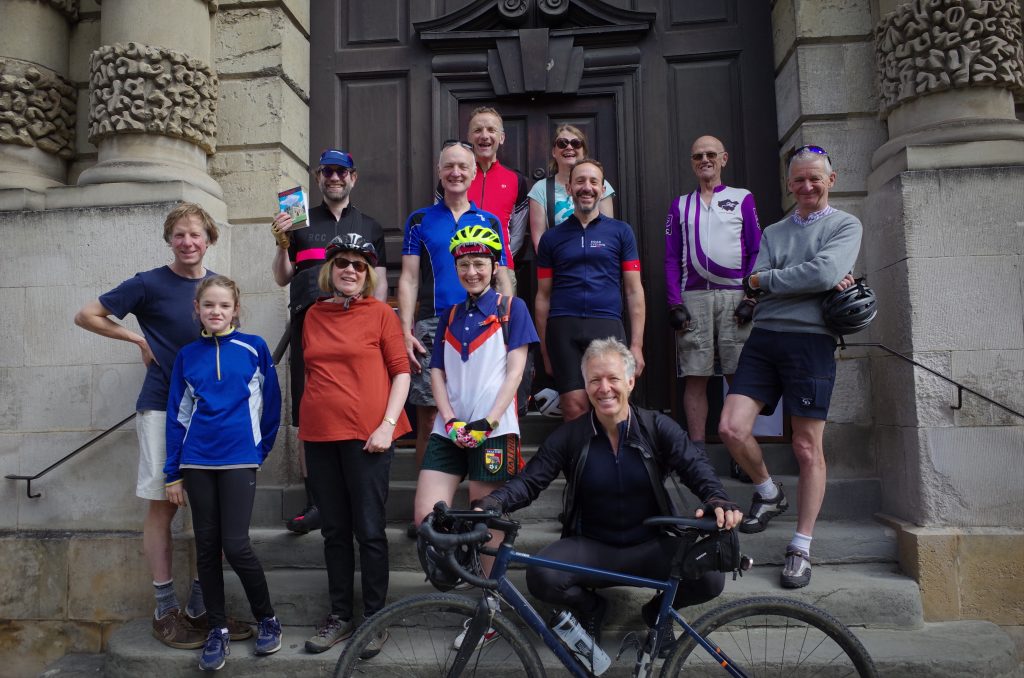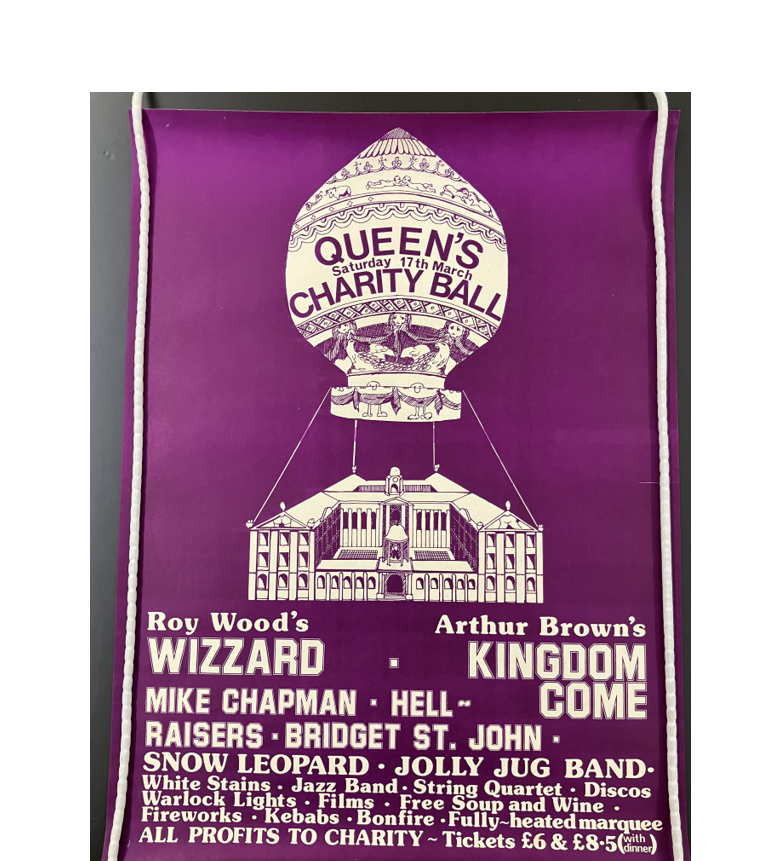Dr Matthew Shaw, Librarian
‘On Sunday 14 of May some members of the Historical Society made a tour, on bicycles, of some of the historic churches of the district…’ So begins a record of cycle ride undertaken in 1922 by several members of the College, including the future provost, R.H. Hodgkin (who enjoyed exploring the countryside on both horseback and bicycle; his widow later blamed the exertions on the latter for his blindness in one eye). The account, which can be found in a minute book kept in the Library, details the route from the College, to Yarnton, South Leigh, Stanton Harcourt and Babcock Hyde. Could, I wondered, the route be recreated a hundred years later?
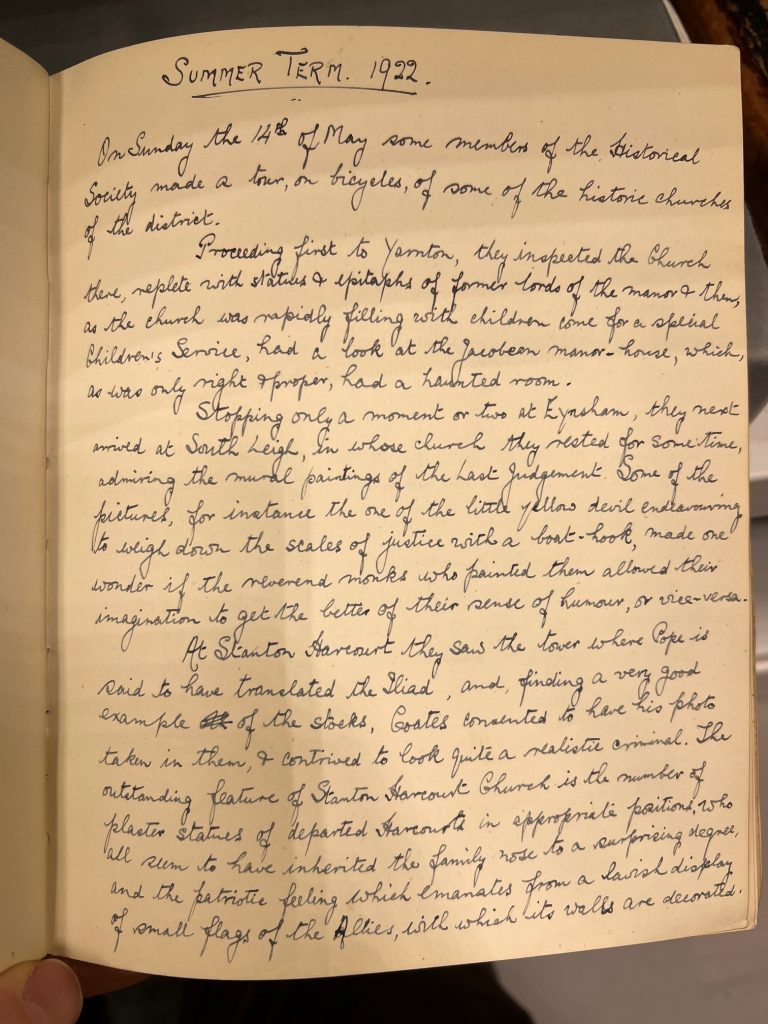
On a sunny and nearly cloudless 11 June 2022, the College provided a positive answer. Marking Bike Week, the recent revival of the Historical Society, and, most importantly, the centenary of the ride, over a dozen Staff, Fellows, Old Members, offspring, friends and partners gathered at 10am in front of the College. There was perhaps more Lycra and carbon than was present in 1922, but a copy of Pevsner was sighted, along with several sturdy steel bikes and woollen jerseys.
The route began with what was probably a variation on the 1922 course, following the canal north to the A44; presumably our precursors took the then-quieter Woodstock Road. St Benedict’s Church in Yarnton offered the first stop. A century after the building ‘rapidly fill[ed] with children come for a special Children’s Service’, today’s parishioners had arranged a flower show, along with a coffee and cake stall. The Rev. Petters was also there, and gave a very brief introduction to the history of the church, the status of the Jacobean Manor House (now being turned into a theological centre, and so we were unable to verify the presence of the ‘haunted room’ identified in 1922), and led the group into the usually closed chapel, with its fine armorial painted glass and tombs of the Lords of the Manor.
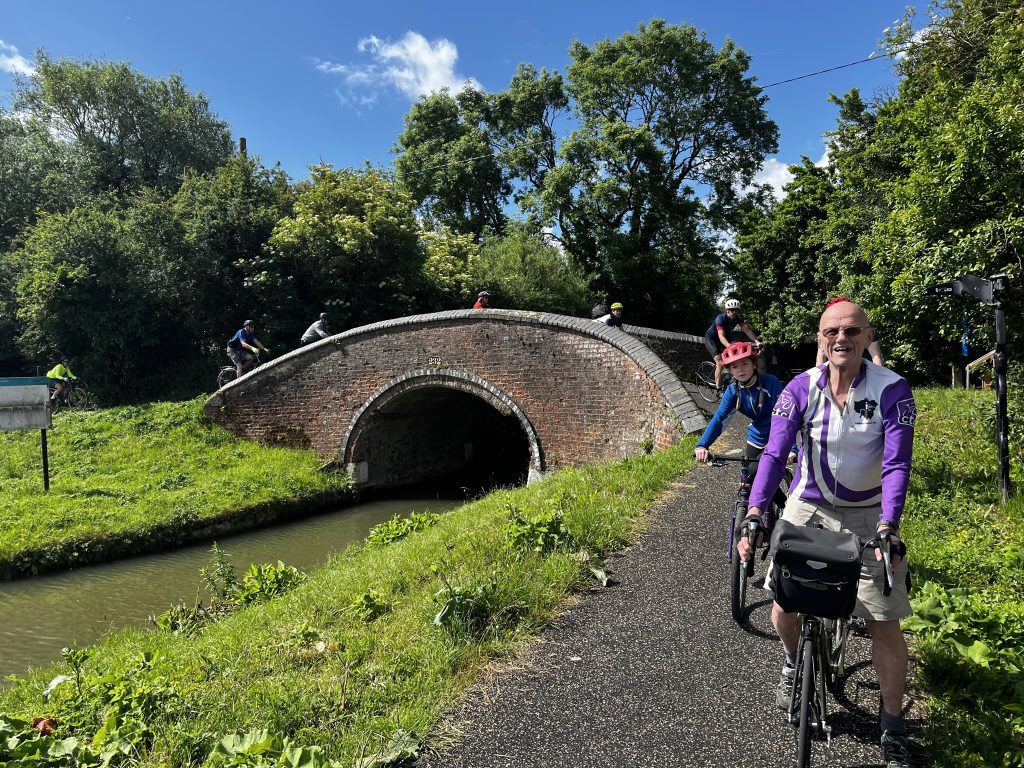
Almost immediately after this stop, came a contemporary addition to the route: Worton Kitchen Gardens. Along with further coffee and cake, some further novelty was unveiled, as Prof. Morten Kringelbach launched ‘Serafina’, a drone camera for an aerial group photograph and video. Supplies for supper were also purchased. Initially, this was to be the end of the ride for those wishing to do a shorter route, but spirits remained high and legs were fresh, so a complete peloton continued towards Eynsham making use of the quiet old road. Just before the town, two participants peeled off, one to attend the launch of a kiln in Wytham Wood. The main group continued via Queen’s Street, noting the Queen’s Head and Queen’s Lane along the way. Heading across country, a bridleway led to South Leigh, which given the imaginative use of bunting and royal mannequins on view had clearly celebrated the Platinum Jubilee with some enthusiasm. A sprint up the hill, and into the church of St James the Great, with its door left open for swallows. Inside, the Doom Painting, restored in the nineteenth century and showing a ravenous hell mouth and enthusiastic devil attempting to weigh down souls as they were weighted impressed the group. Outside, the clock dial offered a warning, ‘Ye Know Not What Hour Your Lord Doth Come’.
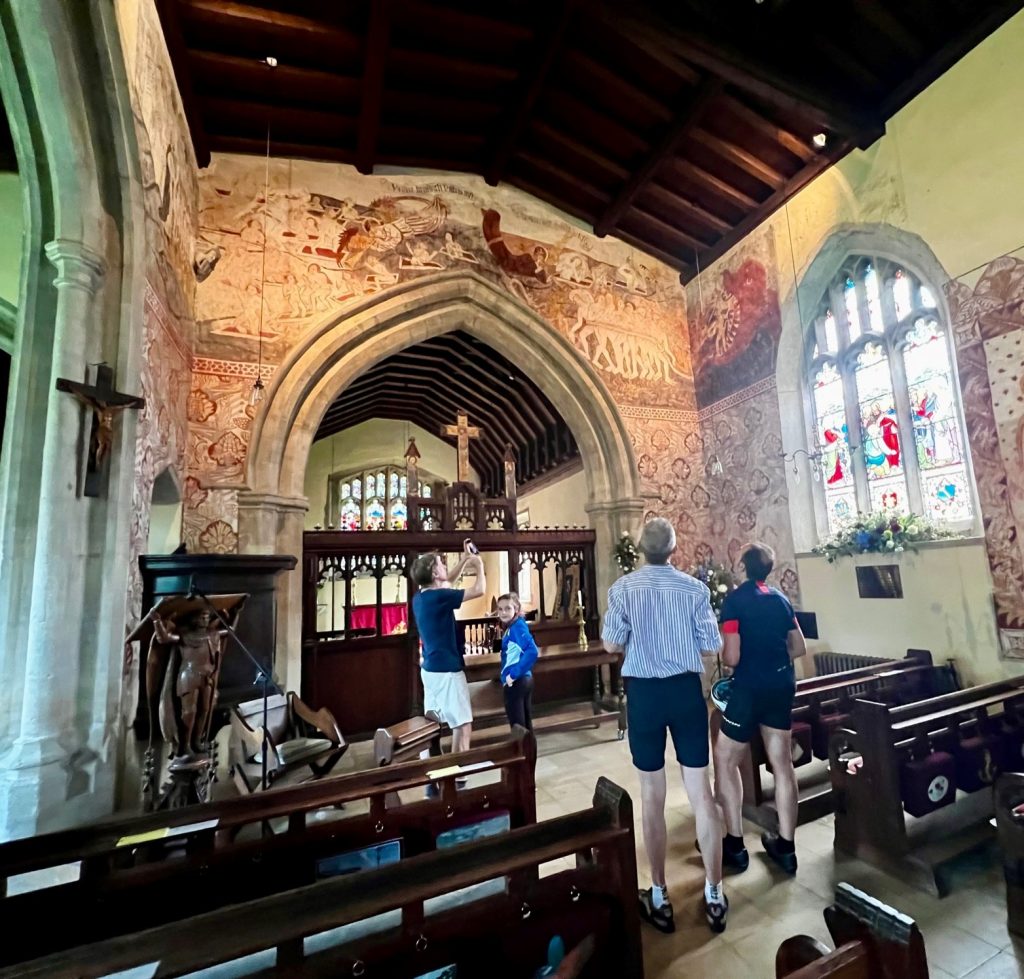
Continuing with the theme, an addition to the route: the Devil’s Quoits, hidden alongside a large recycling centre near Stanton Harcourt (Pope’s Tower remained unsighted on this tour; perhaps something for 2122). Partly destroyed during the preparations for an R.A.F. runway during the Second World War and restored in 2008, the Devil’s Quoits are a large Neolithic henge (or stone circle). Seraphina again took flight, leaving no hiding place for terrestrial beings below.
Hunger now became something of concern for the group. Our antiquarian rather than athletic pace meant we had missed the kitchen at the planned stop at a public house in Northmoor. The Ferryman at Bablock Hythe had a similarly closed kitchen, so the decision was taken to refuel on crisps, nuts and other bar snacks, washed down with some shandy while we contemplated the River Thames and the loss of the ferry in the 1960s.
The spot, of course, appears in Matthew Arnold’s The Scholar Gypsy, which references Joseph Glanvill’s The Vanity of Dogmatizing (1661). In preparation, I inspected our copy – a slightly later, second edition (1665). Perhaps anticipating the loss of the ferry, the tale of the scholar gypsy had been edited out. Arnold clearly had access to the 1661 text.
While a couple of wild water swimmers suggested a possible method of crossing the river, we instead headed along the banks of the Isis (with one Old Member making his farewells at this point), crossing at a lock. It began to feel as though we were on the home stretch as we arrived at Appleton, then Cumnor and then via bridle path ascended the heights of Harcourt Hill, and substantial views across the county and city.
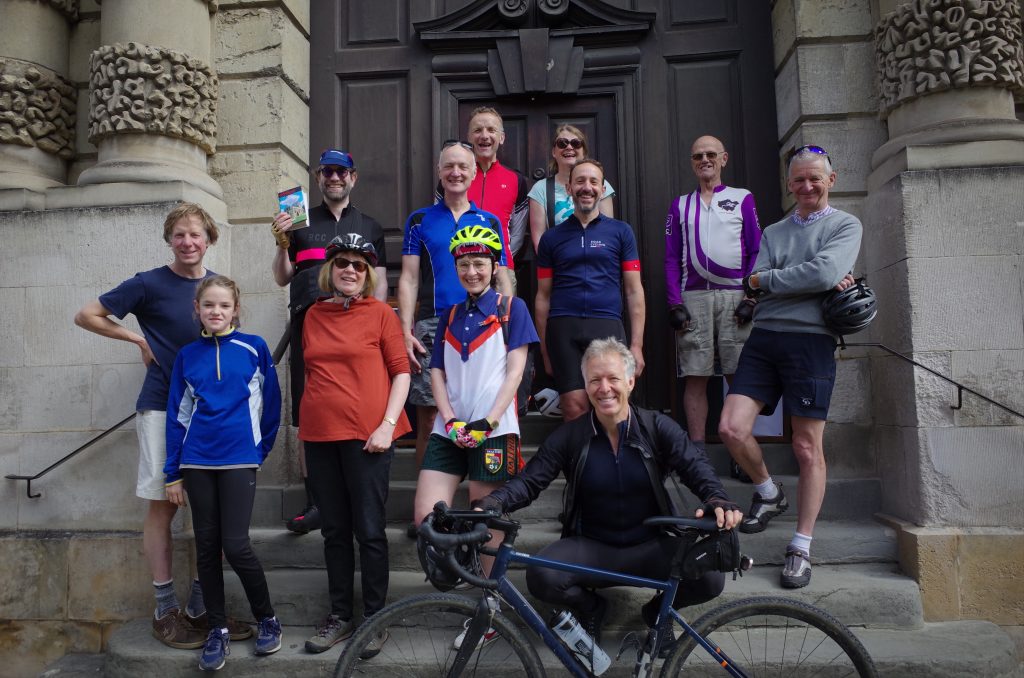
The professional riders of the 2022 Women’s Tour had arrived ahead of us as we descended into Oxford, leaving the city bustling with visitors and cyclists, with some race signs and apparatus appropriately marking the end of the route. Almost at the strike of 4pm, the group returned to the front of College, and then retired for a welcome drink in the Provost’s Garden, sitting almost directly above the vault in which the minute book containing the account of the 1922 ride is stored. Where, we wondered would the College’s peloton go in 2122?
